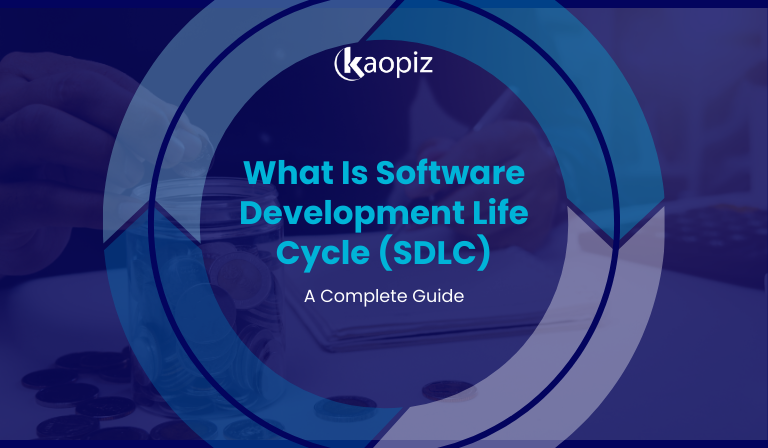Team as a Service: Smarter Model for Scaling Software Teams
Scaling a managed software team today is harder than ever—hiring is slow; talent is scarce, and projects require multiple roles beyond just developers. Team as a Service (TaaS) solves this by providing a ready-made, cross-functional product team that works as an extension of your organization.
Unlike traditional outsourcing or hiring freelancers, TaaS gives you a stable, high-performing squad that accelerates delivery, reduces risk, and adapts quickly to changing priorities.
This guide explains how the TaaS model works, advantages and disadvantages, when to use it, and why Vietnam is becoming a leading destination for building offshore software development team.
Table of Contents
- What Is Team as a Service (TaaS) and How Does It Work?
- Team as a Service vs Staff Augmentation vs Traditional Outsourcing
- When Should a Business Use TaaS? (Use Cases)
- Benefits of Team as a Service
- Disadvantages of TaaS and How to Overcome Them
- Future of Team as a Service in Software Development
- Why Vietnam Is Emerging as a TaaS Powerhouse
- Kaopiz TaaS Model: Build a Scalable Offshore Product Team
- Conclusion
- FAQs
What Is Team as a Service (TaaS) and How Does It Work?
To understand why TaaS is becoming a preferred model for modern software teams, it’s important to first define what it is and how it operates in real projects.
What Is Team as a Service?
Team as a Service is a modern software development model where companies “rent” a ready-made, cross-functional product team—typically including developers, QA engineers, UI/UX designers, DevOps, and a project lead—to work as an integrated extension of their in-house team.
Unlike traditional outsourcing, which usually focuses on handing off tasks or entire projects, TaaS provides a dedicated team that stays aligned with your goals, processes, and product roadmap. The team is fully managed on a day-to-day basis, but you retain strategic control and visibility over delivery.

Key Characteristics of TaaS:
- Cross-functional team: All core roles needed for product development are included.
- Long-term engagement: Designed for ongoing product evolution, not one-off tasks.
- High integration: The team uses your tools, follows your workflows, and participates in your rituals (standups, sprint reviews, retros).
- Predictable delivery: Stable velocity and consistent output.
- Scalable model: Add or reduce team members quickly as product demands change.
Modern software requires rapid iteration, multi-role collaboration, and continuous delivery—things that are hard to achieve with freelancers or fragmented outsourcing. TaaS provides a unified team that can onboard quickly, deliver faster, and adapt as your product grows.
How the TaaS Model Works in Practice
The TaaS model gives you a ready-made, cross-functional product team that integrates directly into your workflows. Instead of hiring roles individually, you get a cohesive squad built to deliver from day one.
- Team Assembly: The vendor forms a team based on your needs—typically including PM/PO, developers, QA, UI/UX, and DevOps. Each member is selected to match your tech stack and project goals.
- Fast Onboarding: The team adopts your tools, joins your sprint rituals, and learns your product logic. They operate as an extension of your in-house team, not an external contractor.
- Agile Delivery: Work is executed in sprints: planning → development → testing → review → continuous improvement. This ensures stable velocity and predictable delivery.
- Seamless Collaboration: Daily communication happens through your channels (Slack, Teams, Jira). Shared boards, documentation, and transparent reporting keep everyone aligned.
- Scalable Resourcing: You can easily add or reduce roles as your product evolves—no recruitment delays, no long-term overhead.
- Vendor-Supported Management: While you control the roadmap, the vendor handles team performance, replacements, training, and productivity tracking.
Team as a Service vs Staff Augmentation vs Traditional Outsourcing
Choosing the right delivery model depends on how much control you want, how complex your product is, and whether you need individual talent or a fully managed team. Below is a simple breakdown of how TaaS vs staff augmentation vs traditional outsourcing differ.
| Model | Team Structure | Who Manages Delivery? | Best For | Pros | Cons |
|---|---|---|---|---|---|
| TaaS | Full cross-functional team | Shared (vendor manages team; you direct product) | Long-term products, scaling teams | High cohesion, predictable velocity, scalable | Higher dependency on vendor |
| Staff Augmentation | Individual engineers | You | Filling skill gaps, fast hiring | Full control, flexible | Requires strong internal PM/QA |
| Traditional Outsourcing | Vendor’s team | Vendor | Fixed-scope projects, support | Low internal effort, clear deadlines | Less control, limited transparency |
Expert Recommendation:
- Choose TaaS when you require a long-term, cross-functional team that integrates deeply with your workflows and shares responsibility for delivery outcomes.
- Choose Staff Augmentation when your internal team is strong but needs additional engineering capacity or niche skills on a flexible, short-term basis.
- Choose Traditional Outsourcing when you want a vendor to take full ownership of a defined project, including scope, delivery, and management.
When Should a Business Use TaaS? (Use Cases)
TaaS outsourcing is ideal for companies that need a stable, cross-functional product team without the delays and overhead of traditional hiring. Below are the most common scenarios where TaaS delivers the strongest value.
- Building a New Product or MVP: When launching a new product, you need multiple roles—developers, QA, UX, and DevOps—to work together from day one. TaaS provides a complete squad that can start immediately.
- Scaling Faster Than Internal Hiring Allows: If your product roadmap is growing faster than your ability to hire locally, TaaS gives you a ready-made team that can expand or shrink quickly based on project needs.
- Replacing Fragmented Freelancers: Companies with scattered contractors often struggle with coordination and quality. TaaS offers a unified, well-managed team that works with consistent standards.
- Long-Term Product Evolution: For products that require continuous updates, maintenance, and new features, TaaS provides stability, consistent velocity, and long-term knowledge retention.
- When Internal Teams Are at Capacity: If your in-house engineers are overloaded, a TaaS team can take full ownership of a specific module, feature set, or product line.
- Need for Multi-Role Expertise (Not Just Developers): TaaS is ideal when you require specialists (QA automation, UX, DevOps, AI engineers) that are expensive or hard to find in local markets.
- Digital Transformation Programs: Enterprises undergoing transformation often need a dedicated, independent product team to drive new initiatives without disrupting internal workloads.
Benefits of Team as a Service
Team as a Service gives companies a complete, ready-to-perform product team—allowing them to scale quickly, reduce operational overhead, and deliver software more predictably.
Below are the core TaaS benefits that make this model a smarter alternative to traditional outsourcing or hiring.
- Cross-Functional Expertise in One Team: TaaS provides all essential roles working together as a unified squad. This eliminates the complexity of assembling skills from multiple sources.
- Faster Time-to-Market: With a stable team and an Agile delivery rhythm, companies ship features faster, avoid onboarding delays, and maintain consistent development velocity.
- Predictable Costs & Budget Control: TaaS runs on a clear monthly or team-based fee. Companies avoid the overhead of recruiting, training, or employee benefits—while keeping long-term budgets stable.
- Reduced Management Overhead: The vendor handles team performance, replacements, upskilling, and productivity tracking. Your internal team focuses on product direction instead of day-to-day personnel management.
- Long-Term Knowledge Retention: Unlike freelancers or rotating contractors, a TaaS team stays with your product long-term, building deep domain understanding that accelerates future development.
- Easy Scalability: Need more engineers, a QA automation specialist, or a UX designer? TaaS allows you to scale roles up or down quickly—without the delays of traditional hiring.
- Higher Quality & Consistency: A full team with shared standards, processes, and tools ensures better quality control, fewer handoff issues, and more consistent output.

Therefore, TaaS offers speed, flexibility, and reliability by giving companies a fully integrated product team built to deliver continuously—without the cost, complexity, or delays of traditional hiring models.
Disadvantages of TaaS and How to Overcome Them
While Team as a Service offers strong benefits, it also comes with challenges. Understanding these risks—and knowing how to mitigate them—helps companies get the most value from the model.
💡 Expert Advice: “TaaS works best when treated as a strategic partnership, not a transactional hiring model. Invest time in onboarding, maintain transparent communication, and align the team around shared outcomes—not just tasks. The more context and clarity you give your TaaS team, the closer they will perform to an in-house product squad.”
| Disadvantage | Challenge | How to Overcome It |
|---|---|---|
| 1. Dependency on an External Vendor | Vendor-managed teams may accumulate deep product knowledge, creating long-term dependency. |
• Document architecture, decisions, workflows • Use shared repos & knowledge bases • Define clear IP ownership & transition processes |
| 2. Initial Onboarding & Knowledge Transfer Takes Time | New teams need time to understand product logic, codebase, and business requirements. |
• Provide complete documentation • Start with a discovery sprint • Assign an internal PM/PO to guide onboarding |
| 3. Communication & Cultural Misalignment | Different communication styles or cultural expectations can slow collaboration. |
• Set communication norms & daily check-ins • Run alignment workshops & retros • Choose vendors with strong English/cross-cultural skills |
| 4. Integration with In-House Teams | Poor alignment may cause duplicated work, delays, or unclear ownership. |
• Define roles & responsibilities clearly • Use unified tools (Slack, Jira, Confluence, Azure DevOps) • Hold joint sprint planning & review sessions |
| 5. Risk of Scope Drift or Misaligned Priorities | Team may work on lower-impact tasks without strong product direction. |
• Maintain a clear roadmap & prioritized backlog • Assign a dedicated PM/PO • Use outcome-based KPIs to guide delivery |
Future of Team as a Service in Software Development
As digital products become more complex and global talent shortages intensify, the Team as a Service model is evolving from a niche approach to a mainstream strategy for building high-performing software teams. Several trends are shaping the future of TaaS—and why more companies are adopting it as a long-term solution.
- Distributed product squads will become standard. Companies are shifting toward complete, cross-functional squads instead of individual hiring. TaaS aligns perfectly by providing ready-made teams that deliver continuously.
- AI will accelerate development velocity. TaaS teams will use AI-assisted coding, automated testing, and predictive analytics to speed up sprints and improve quality, making the model even more cost-efficient.
- Demand for niche tech expertise will keep rising. Skills in AI, cloud-native development, cybersecurity, and automation are becoming harder to hire locally. TaaS offers on-demand access to these specialists.
- Hybrid global teams will dominate the modern engineering model. Future teams will combine in-house leadership, offshore TaaS squads, and AI-powered workflows to achieve 24/7 progress and higher resilience.
- Long-term product ownership will replace transactional outsourcing. Companies will seek stable TaaS teams that stay for years, building deep domain knowledge and contributing to product strategy—not just execution.
- APAC nearshore hubs like Vietnam will grow rapidly. Timezone alignment, strong engineering talent, and cost advantages will make Vietnam a preferred TaaS destination for Singapore, Japan, and Australia.
Why Vietnam Is Emerging as a TaaS Powerhouse
Vietnam IT outsourcing has rapidly become one of Asia’s most attractive destinations for building cross-functional software teams. With strong technical talent, competitive costs, and a proven track record in offshore delivery, the country is uniquely positioned to support the growing demand for TaaS.

Large, Skilled Engineering Workforce
Vietnam produces thousands of IT graduates each year, with strong foundations in software engineering, QA, cloud, and AI. The talent pool is young, adaptable, and capable of working with modern stacks like microservices, React, Node.js, Java, and AWS.
Cost Advantage Without Compromising Quality
Companies can reduce development costs by 40–60% compared to Singapore, Japan, or the US—while maintaining high engineering standards. This makes long-term TaaS engagements far more sustainable than relying solely on local hiring.
Strong Culture of Team-Based Delivery
Vietnamese tech companies excel in delivering cross-functional, Agile product teams, not just individual developers. This makes Vietnam particularly well-suited for the offshore development team model, where cohesion and predictable velocity are essential.
Excellent Communication & Global Mindset
Vietnam’s engineers have strong English communication skills and a high level of cultural adaptability, enabling smooth collaboration with international product managers and executives.
Stable, Low-Attrition Workforce
Vietnam maintains lower attrition rates compared to India or Southeast Asia markets. Teams stay longer on projects, preserving product knowledge and reducing turnover risks—one of the biggest advantages for TaaS longevity.
Strategic Location & Time Zone Alignment
Vietnam’s time zone overlaps seamlessly with Singapore, Australia, and much of APAC, enabling real-time communication and faster decision-making. This is a critical advantage for distributed teams.
Growing Tech Ecosystem Supported by Government Initiatives
Vietnam’s government actively supports the IT sector with:
- Investment incentives
- Technology parks
- STEM education programs
- Startup-friendly policies
This ecosystem strengthens Vietnam’s place as a global technology hub.
Kaopiz TaaS Model: Build a Scalable Offshore Product Team
Kaopiz provides a complete Team as a Service model in software development designed for companies that want to accelerate delivery, expand technical capabilities, and maintain stable long-term product development. Our cross-functional teams integrate seamlessly with your organization, operating with the same standards, tools, and delivery discipline as your in-house team.

If you only need to add individual engineers rather than a full cross-functional team, explore our IT Staff Augmentation services for a more flexible hiring approach.
Cross-Functional Teams Ready to Deploy
Kaopiz assembles dedicated product squads tailored to your needs, including:
- Project Manager / Product Owner
- Frontend & Backend Developers
- QA (Manual & Automation)
- DevOps Engineers
- UI/UX Designers
- Data/AI Engineers (optional)
Every team is built to support the full product lifecycle—from discovery to delivery and continuous improvement.
Seamless Integration into Your Workflow
Our teams adopt your communication channels, tools, coding standards, and Agile rituals. Whether you use Scrum, Kanban, or hybrid models, Kaopiz teams operate as a natural extension of your internal engineering organization.
Delivery Excellence Through Agile & DevOps
Kaopiz uses mature delivery practices to ensure predictable outcomes:
- Sprint planning & estimations
- Daily standups and weekly demos
- CI/CD pipelines and automated testing
- Regular retrospectives for continuous improvement
- Clear documentation and transparent reporting
This creates consistent velocity and reduces delivery risks.
Scalable Teams for Every Stage of Your Product
Whether you need one small squad or multiple product teams, Kaopiz scales capacity quickly and reliably. Additional roles can be added on demand—perfect for companies expanding into new features, systems, or markets.
Enterprise-Level Security & Compliance
Kaopiz operates under strict security frameworks:
- ISO 27001 (Information Security Management)
- ISO 9001 (Quality Management)
- Secure development processes
- PDPA/GDPR-aligned practices for Singapore and global clients
This ensures your product and data remain protected throughout the engagement.
Proven Success Across Industries
Kaopiz has delivered more than 1,000 projects for businesses in:
- Fintech
- Healthcare
- Retail & E-commerce
- Education
- Logistics & Supply Chain
- Manufacturing
Our 700+ TaaS professionals have helped startups scale rapidly and supported enterprises through major digital transformation initiatives.
Singapore-Focused Delivery Approach
With a strong presence in Singapore and Japan, Kaopiz teams are optimized for APAC collaboration—offering:
- Time zone alignment
- Strong English and Japanese communication
- On-site support when needed
- Deep understanding of regional compliance (PDPA)
Kaopiz’s TaaS model gives companies a reliable, scalable, and cost-efficient way to build high-performing software teams—backed by strong engineering culture, enterprise-grade processes, and seamless cross-border collaboration.
Conclusion
Team as a Service is quickly becoming one of the most effective models for modern software development—offering companies the speed, flexibility, and cross-functional expertise they need to stay competitive. By providing a complete, dedicated product team that integrates seamlessly with your workflows, TaaS removes the complexity of hiring, accelerates delivery, and ensures long-term product continuity.
With its deep talent pool, strong engineering culture, and cost advantages, Vietnam is emerging as a leading destination for high-performing outsourced product development teams. And with proven delivery processes, enterprise-grade security, and a Singapore-focused approach, dedicated offshore team of Kaopiz is well-positioned to help businesses scale confidently and sustainably.
If you’re exploring ways to expand your development capabilities, TaaS offers a practical, strategic path forward—start small, scale fast, and build products with a stable team you can rely on.
FAQs
- Is TaaS Cheaper Than Hiring?
- Yes. TaaS is typically 40–60% more cost-effective than hiring locally because you avoid recruitment costs, training, benefits, and long-term overhead. You pay a predictable monthly fee for a fully staffed team.
- How Is TaaS Different from Staff Augmentation?
- Staff augmentation adds individual engineers to your existing team, and you manage all delivery. TaaS provides a complete, managed cross-functional team—developers, QA, UX, DevOps, PM—working as an integrated unit with shared responsibility.
- What Does a Typical TaaS Team Look Like?
-
A standard TaaS squad includes:
• Project Manager or Product Owner
• Frontend & Backend Developers
• QA Engineers (Manual/Automation)
• UI/UX Designer
• DevOps or Cloud Engineer
Additional specialists (AI/ML, Data, Mobile) can be added as needed. - How Long Does Onboarding Take?
- Most TaaS teams fully onboard within 1–2 weeks, depending on product complexity. Discovery sprints accelerate alignment and ensure smooth integration with your tools and workflows.
- Which Industries Does TaaS Work Best for?
- TaaS suits any industry with ongoing digital product needs, including Fintech, E-commerce, Retail, Healthcare, Education, Logistics, and Manufacturing. It’s especially effective for companies needing fast scaling and continuous product evolution.




















